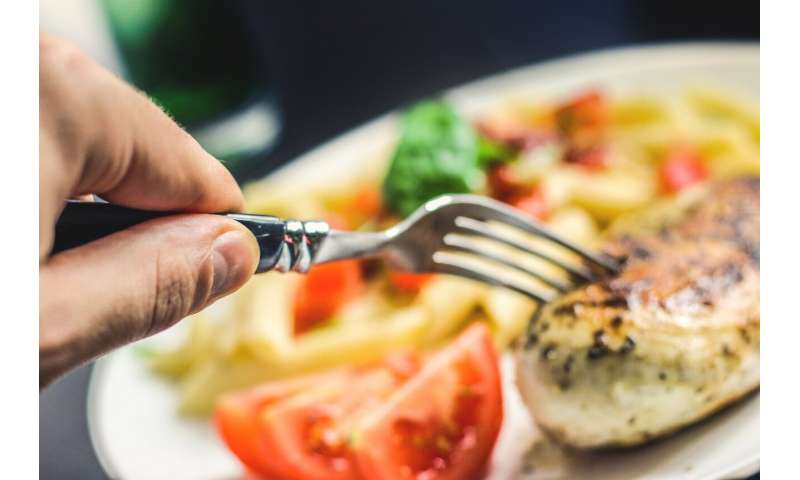Does the brain trick you into thinking food tastes better on Thanksgiving? It’s complicated.


Turkey that’s often bland and accompanied with cranberry sauce from a can? Stuffing yourself with food until you’re set to burst? Those are two of the most common hallmarks of Thanksgiving, which most Americans around the country looking forward to with gusto each year, but have you ever wondered why?
The food at Thanksgiving helps drive the enthusiasm for the holiday—but there’s probably more behind the taste of turkey, mashed potatoes, yams, cranberry sauce and other delicacies than you think.
Professor Don Katz is an expert in behavioral neuroscience and studies gustatory perception in learning—a fancy way of explaining the phenomenon of what makes foods taste good or bad.
Katz, who is both a neuroscientist and psychologist, was eager to apply his perspective to the Thanksgiving table for BrandeisNOW.
Here are four things to know about taste as you look forward to dining on this year’s Thanksgiving feast:
First off, there’s more to taste than taste buds
What even is taste? Many people believe it’s a just a sense based in the tongue and mouth that determines the characteristics and flavors of foods we ingest.
But that’s only part of the story. Turns out, the “sense” of taste is only part of a complex system that determines what we eat.
“Taste is the gateway to the digestive system,” Katz said. “It’s not just a sensory system. It’s your last chance to decide what is going to enter your digestive tract. That’s integral to why what we perceive as the sense of taste is actually much more than that. It is vital that you’re able to make good decisions about what you consume and what you don’t.”
“Taste buds are the last line of defense, but evolution didn’t leave you at the mercy of just that,” Katz added. “Taste is important enough that it’s combined with other information to get you a rich dataset on which to decide what to consume.”
When you take a bite of something and ingest, it’s because your brain has green-lit that decision by this “dataset”—clues from countless memories, social cues, and other observations all rolled into one.
Think about this before you have a beer on Thanksgiving

Do you remember the first time you drank a beer?
Katz is willing to bet it wasn’t a pleasant experience, as beer is generally quite bitter, regardless of the brew.
Nevertheless, many people around the world consume significant amounts of it. Having a cold mug filled with an IPA, porter, or pumpkin-flavored brew may even be part of your Thanksgiving tradition when you watch football or take your seat at the table.
The answer to why many people come to like beer might rest partly in human social interactions.
“It’s complicated and somewhat speculative, but when something tastes bad to you, you’re not going to consume enough of it to find out the good effects,” Katz said. “But, if you see someone else consuming the same thing, and you see it having a good impact on that person, your system will take that information from that social experience and adjust to not reject it.'”
“The best of example of this is beer,” Katz added. “In social situations, you’re told through many cues that drinking beer can be pleasant. Many people, before they know it, come to love it.”
Beer isn’t an outlier. Katz believes we come to enjoy its taste similar to the way people around the world appreciate licorice, sushi, Campari and vegemite.
When it comes to taste, humans and rats are alike
Katz has been studying what makes food taste good or bad for nearly 20 years and he’s had plenty of help along the way.
Rats have been particularly useful. Katz’s experiments on rats have demonstrated how people can come to enjoy beer and, more broadly, learn from social cues and their environment to adjust the way they perceive taste.
One of Katz’s experiments involved limiting the food that a rat could eat for several days. He then added raw cocoa—which rats dislike because of its bitter taste—to its food. Because the animal was hungry, it ate the cocoa just the same.
Katz then added another rat, one that was not food deprived, to the cage. As part of their normal social interactions, they smelled each other’s breath before Katz returned the second rat to its own cage. He then offered the second rat the bitter cocoa, which the rat ate.
In fact, a single interaction with the first rat led the second rat to find the cocoa tasty despite its bitter flavor.
“Social learning of this sort doesn’t require a lot of trials—it’s not like learning to serve a tennis ball,” Katz said. “What’s more important than how often you do something is how felicitous the outcome of doing something is perceived to be.”
“It’s really uncommon for a rat to encounter another rat that is alive but ill,” he added. “In the rat world, you’re either alive or dead. When you smell something on another rat and that rat is healthy, that’s a big deal. If it wasn’t healthy, it’d be dead.”
Katz said the experiment expanded what the rat believed it could eat without dying—which is similar to the way humans adjust what they think tastes good or is good for them.
The effect of Thanksgiving on taste
If social cues and our environments play roles in enhancing how food tastes, what does that say about how we eat on Thanksgiving?
Katz said it’s speculative to say turkey, mashed potatoes, yams and other foods become tastier because of Thanksgiving, though he does believe there could a subtle link to most Americans’ enjoyment of the holiday.
“Thanksgiving—divorced from the food—is one of the highlights of the American calendar,” Katz said. “People look forward to it. Family comes home. I wouldn’t be surprised that because the experience is considered so wonderful and central to our sense of well-being, that our taste system can incorporate the experience of celebrating the holiday.”
Source: Read Full Article